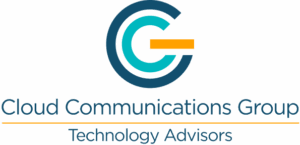Boost Agent Performance and CX with Five9
Today’s customers demand more than just quick answers; they seek fast, personalized, and consistent support across all channels. The customer experience (CX) has emerged as a crucial differentiator for businesses across every industry, whether it’s through phone, chat, SMS, or social media.
Unfortunately, many organizations are still relying on legacy contact center systems that weren’t built to meet these demands, especially at scale. That’s why businesses are moving to cloud-based solutions that offer flexibility, AI-driven intelligence, and omnichannel support.
CCG partners with Five9, a leading provider of cloud contact center solutions, to help clients modernize and scale their CX operations. Together, we empower organizations to not only improve customer satisfaction but also boost agent performance and operational efficiency.
Five9’s Core Capabilities
Five9 delivers a comprehensive, cloud-native platform designed to meet the needs of modern businesses and their customers.
CCaaS Platform: Omnichannel by Design
With Five9, customer engagement happens on a single, unified platform that supports voice, chat, email, social, SMS, and video. Built for scale, Five9 offers 99.999% uptime and flexibility that’s ideal for hybrid and distributed teams.
Seamless CRM and UC Integrations
Contact center success often depends on how well it connects to existing systems. Five9 integrates seamlessly with Salesforce, ServiceNow, Microsoft Teams, Zoom, and many other platforms. CCG ensures these integrations are customized for each client’s tech stack, creating workflows that save time and reduce friction.
AI and Automation
Five9 puts artificial intelligence to work where it matters most, empowering both customers and agents. Features like intelligent virtual agents, predictive analytics, real-time transcription, and automated workflows help speed up resolutions and improve accuracy. With Five9 Genius and GenAI Studio, businesses can design smarter interactions and provide real-time guidance that boosts both CX and agent confidence.
Workforce Engagement Management (WEM) Tools
Agents are the heart of any contact center. Five9’s WEM suite provides tools for forecasting, scheduling, performance tracking, and quality management. Add in gamification and coaching features, and organizations have everything they need to engage, retain, and empower their teams.
Professional Services and Ongoing Support
Beyond the platform, Five9 offers training, consulting, and optimization services. Partnering with CCG amplifies this value; we bring proven deployment expertise, industry insights, and continuous support that ensures clients get the most from their investment.
How CCG Enhances Five9’s Value for Clients
While Five9 provides the technology foundation, CCG ensures that it’s implemented and optimized to fit each organization’s unique needs.
Smooth Cloud Migrations & Implementation
CCG helps businesses move from legacy or on-prem systems to Five9’s cloud platform with minimal disruption. Our proven processes reduce risk and accelerate time-to-value.
Tailored Integrations and Workflows
From Salesforce to Microsoft Teams, CCG ensures every integration is aligned with business needs. We also design AI-powered routing logic, automation flows, and custom workflows that streamline operations and drive measurable improvements.
Industry-Specific Expertise
Different industries face different CX challenges. With experience in financial services, healthcare, retail, insurance, and more, CCG delivers tailored solutions that account for compliance requirements, customer expectations, and scalability needs.
Workforce Optimization
Technology alone won’t improve performance, strategy matters. CCG helps configure Five9’s WEM tools, building custom dashboards, gamification strategies, and coaching frameworks that make agents more effective and engaged.
Our support doesn’t stop after deployment. CCG provides post-launch services including platform updates, AI enhancements, and ongoing optimization plans. Clients gain a partner who evolves with them as their needs change.
Real-World Value for Clients
When businesses choose Five9 with Cloud Communications Group, they gain more than just a technology upgrade where they unlock a more scalable, efficient, and customer-centric way of working. With the flexibility of the cloud, organizations can deploy faster while reducing IT burden, all while leveraging AI-driven automation to streamline service and personalize every interaction. Agents benefit from better engagement tools, performance tracking, and coaching resources that make their jobs easier and more rewarding. Seamless integration with CRM, UC, and other business systems ensures workflows stay connected and efficient, while CCG’s tailored approach keeps every solution aligned with specific KPIs and industry requirements. The result is improved operational efficiency, happier agents, and a customer experience that drives loyalty and long-term growth. Contact us today to elevate your CX!


